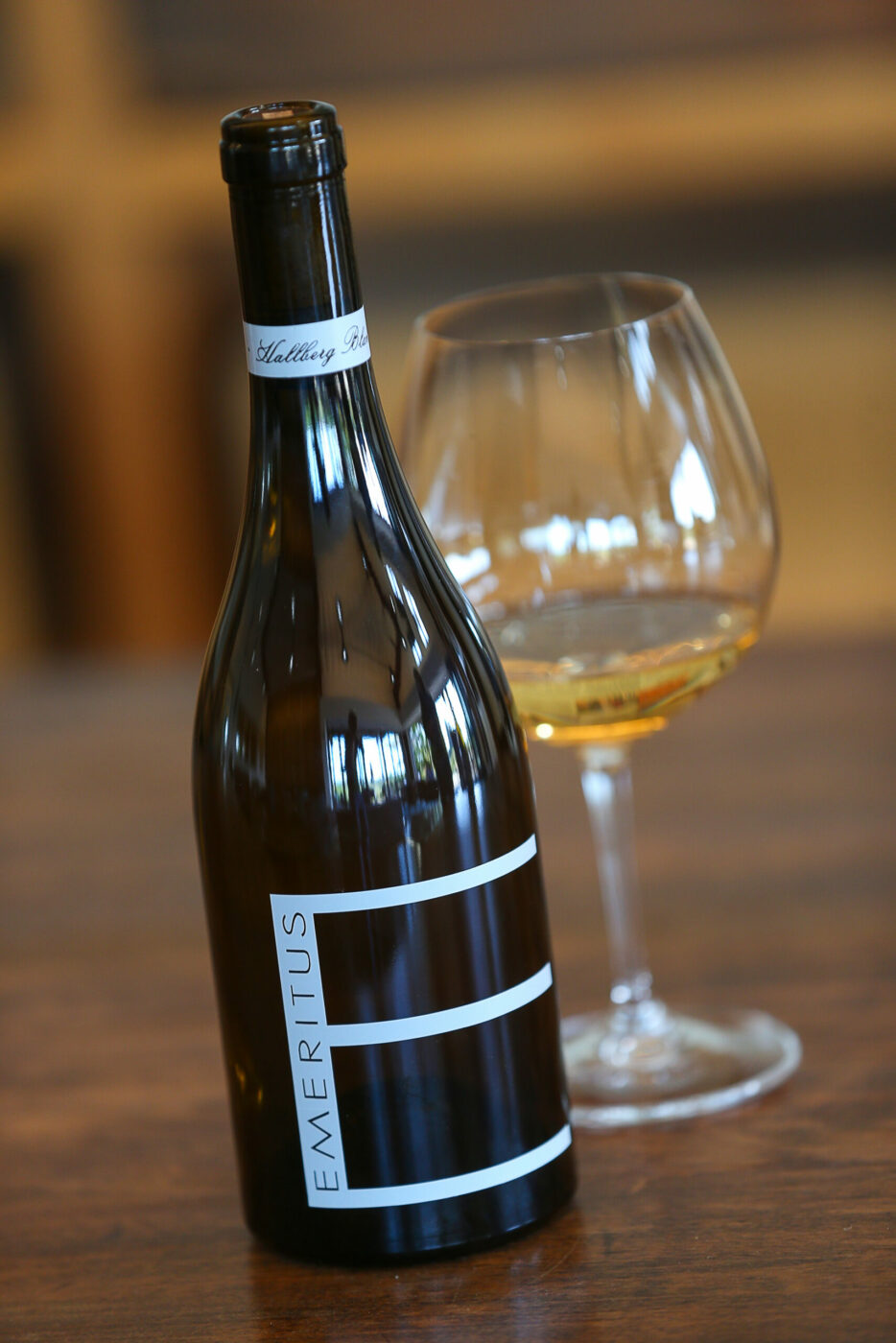With a long career as a key varietal in the making of Champagne, Pinot Noir is no stranger to being stripped of its purple skin. The grape’s interior green flesh is traditionally pressed, fermented, and bubbled into one of the world’s most celebratory beverages.
But what would happen if the juice wasn’t filled with fizz? The answer is white Pinot Noir—a crisp, white oxymoron in a glass.
When red grapes are crushed, the heavily pigmented skins can be separated immediately from the pale juice to make a white wine. If the juice was left to briefly comingle with its skins, you’d have a rosé, and if left to fully macerate on the skins, you’d have a traditional Pinot Noir.
Because the grapes for a white Pinot Noir are generally picked earlier than they’d be if making a red wine, white Pinot Noir has a refreshing acidity that works well with many foods.
Winemaker Shalini Sekhar of Waits-Mast winery likes to capture the bright freshness of the wine by fermenting and aging it in stainless steel. She finds the intertwining aromas of fresh citrus and distinct red cherries to be intriguing.
“There is a hint of red fruit that stands out, even though it’s a white wine,” Sekhar said. “White Pinot Noir may seem like an intellectual exercise, but it makes some damn delicious wine.”

Mari Jones, president of Emeritus Vineyards in Sebastopol, a longtime producer of well-regarded traditional Pinot Noir, had to convince her father, Chardonnay pioneer Brice Cutrer Jones, that a project with white Pinot was worth trying. “He’s always felt that all our wines should offer the best, highest expression of our vineyards, and he didn’t think a white Pinot Noir could do that,” explains Jones.
But during the 2017 harvest, her team came across some fruit they thought could make a delicious white. That first try was a success, and Jones has since released several other vintages. “The wine has all these things you would never associate with red Pinot Noir, like tropical flowers, white fruits and peach blossom,” she says. “It’s a serious wine that’s complex and interesting, but it’s also easy to drink.”
Sekhar agrees. “You can make a white wine from other red grapes, but I don’t think you get the same sense of it being a complete wine,” she says. “Pinot Noir is so expressive, so it’s not surprising that a white wine made with the grape would be equally so.”
Four White Pinots to Try
Emeritus Vineyards, 2022 Hallberg Ranch Blanc, Russian River Valley, $44: Crafted from nine Pinot Noir clones at Hallberg Ranch, this white Pinot Noir envelops the palate in layers of white peach, white strawberry, and lemon curd. On the long finish are notes of corn silk and ginger candy. Serve cool, not cold. emeritusvineyards.com
Maggy Hawk, 2022 White Pinot Noir, Anderson Valley, $60: Aromas of Rainier cherry, sea salt, and Bartlett pear precede a bright acidity that runs through the center of the palate. Flavors of apricot, lemongrass, and grapefruit rind lead to a long, lingering finish. maggyhawk.com
Waits-Mast, 2022 Pinot Noir Blanc, Filigreen Farm, Anderson Valley, $42: Pale gold in color with aromas of Meyer lemon and white nectarine and a hint of cumin. The structured, slightly fleshy palate offers mandarin orange pith and citrus fruit with electric acidity. waitsmast.com
Schug Estate Winery, 2022 White Pinot Noir, Carneros, $46: Barrel-fermented and aged sur lie for five months in neutral French oak. Flavors of stone fruit, honeysuckle, wild strawberries, and white peach followed by exotic notes of quince, kiwi, and orange zest. schugwinery.com













